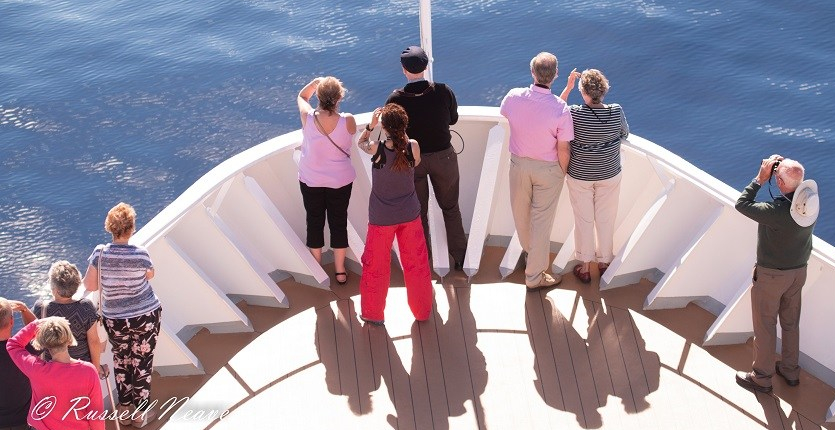After leaving Madeira in the falling light, we woke the following morning to find La Palma just in sight on the horizon and calm sea conditions. However, despite the excellent viewing conditions, we recorded just one Sperm Whale which surfaced reasonably close off the port side and was still blowing gently as we lost sight of it behind us. Seabirds also appeared to be few and far between with a handful of Cory’s Shearwater, two Great Shearwater and two Madeiran Storm Petrels recorded.
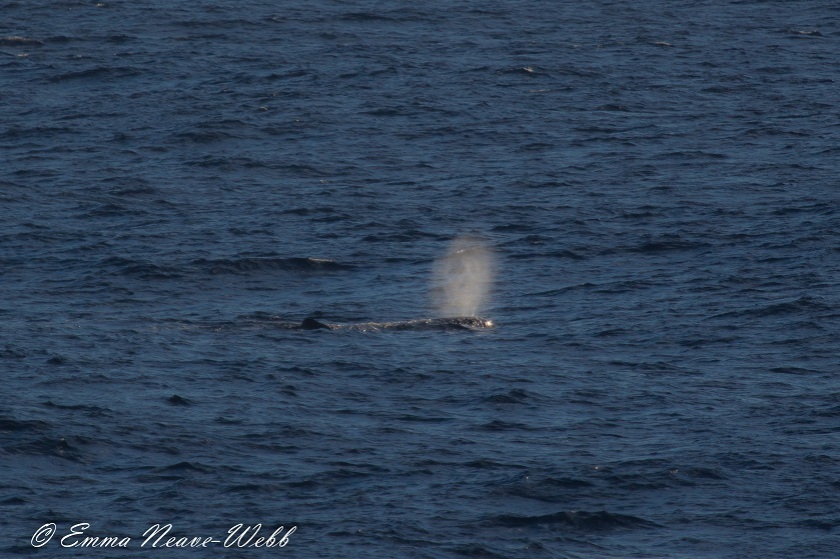
On arrival in a very warm and sunny Santa Cruz de La Palma, Russ and I decided to explore the hills around the town as there was apparently a circular walk to follow which would take us along the coast and then up behind the caldera and back into town. This didn’t quite go according to plan due to a lack of signposts, but we had a very enjoyable few hours walking up through banana plantations in to the foothills. The sound of Canary Lizards scuttling through the undergrowth filled the air along with the repetitive calls of Canary Islands Chiffchaff, a species endemic to the islands.
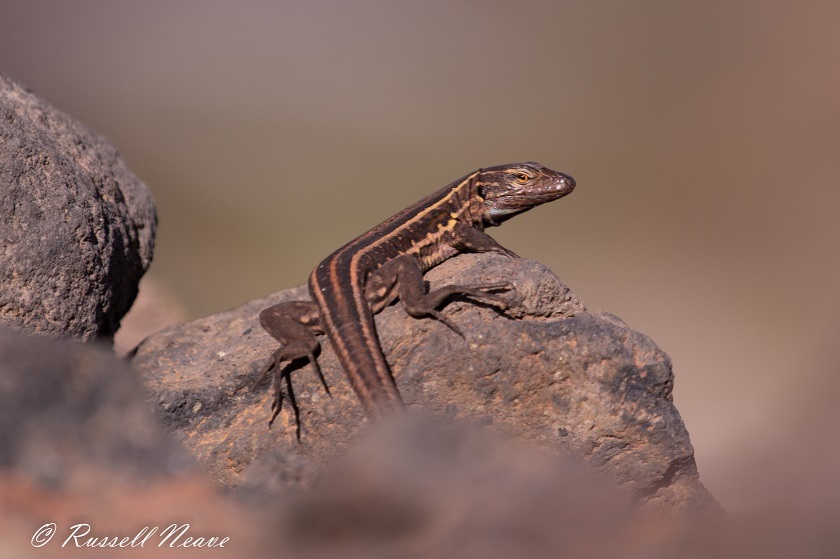
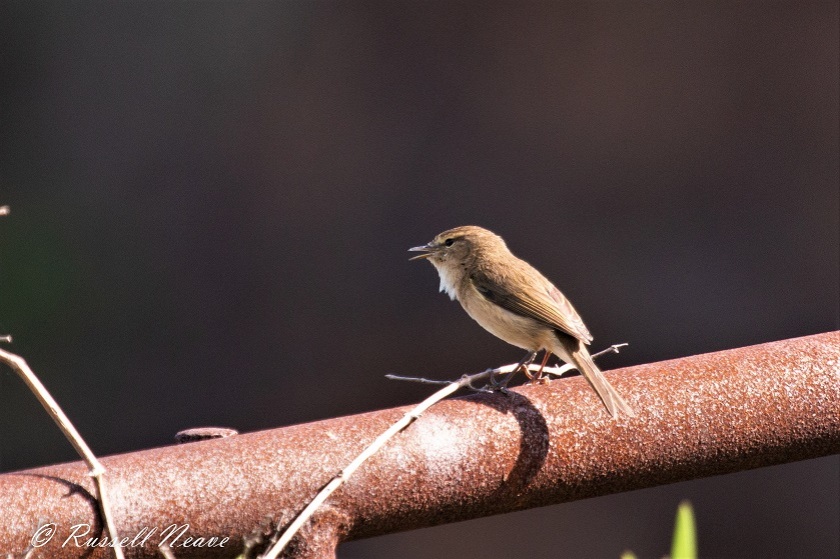
Progress was slowed considerably due to clouds of African Grass Blue butterflies and various dragonflies to divert our attention.
We were delighted to pick up a pair of Red-billed Chough calling overhead, a species which within Macaronesia breeds exclusively on La Palma. Estimated numbers sit at around 2,800 birds, so the island boasts one of the highest population densities of this species in the Western Palearctic: approximately 4 individuals per square kilometre. There seems to be some dispute amongst ornithologists whether they constitute a separate subspecies or not.
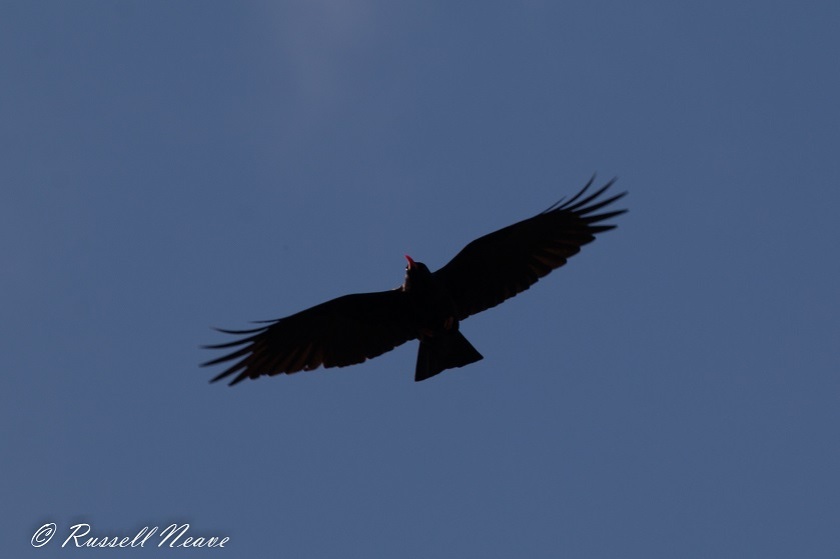
On the way back down to the town, I suddenly spotted a Canary Gecko which was sunning itself on an old wooden bridge. It ran from sight before Russ had chance to see it, and despite waiting several minutes, failed to reappear.
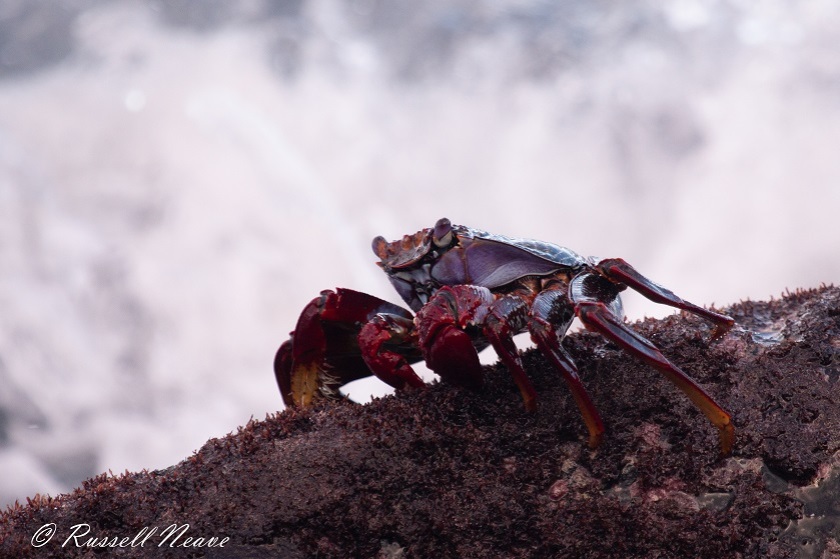
All to soon, it was time to board Braemar in preparation of an evening departure. The Captain’s announcement gave a hint of good weather the next day so we retired for the evening hoping for an excellent day at sea.
We arrived on deck the following morning at sunrise and were greeted with a mirror calm sea and a low swell – a whale watchers dream come true! We certainly didn’t have to wait long either as no sooner had we arrived than a big group of around 150 Atlantic Spotted Dolphin charged into the bow to greet us. We hadn’t even had time to set cameras up! This was followed a few minutes later by another smaller group which stayed around 500m off before another 15 Atlantic Spotted Dolphin raced in to bowride. I already had the feeling it was going to be a good day and I wasn’t disappointed!
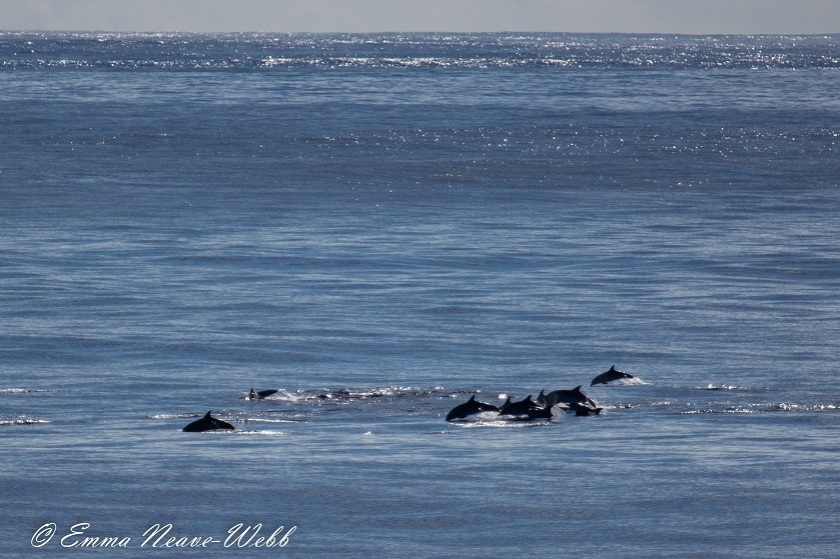
After a brief lull to catch our breath, I spotted a small, dark animal roll quietly at about 1 o’clock (we use the clock face to get passengers on to sightings), a beaked whale? It rolled again showing a squarish head, followed by a second animal and then a third. At this point, with the blood racing, I knew this was something different that I hadn’t seen before. A Kogia species – either Pygmy or Dwarf Sperm Whale! Dastardly things to identify at sea as they are so rarely seen and when they are, they rarely show much at all, so Russ and I rattled off as many photographs as we could whilst trying to ensure all the passengers saw these enigmatic little cetaceans. Later analysis of the images showed crucial features of a short, straight back and relatively large, fairly erect dorsal fin which help distinguish these animals as Dwarf Sperm Whale. Species number 37 for me in my quest to see all the cetacean species in the World, fantastic!
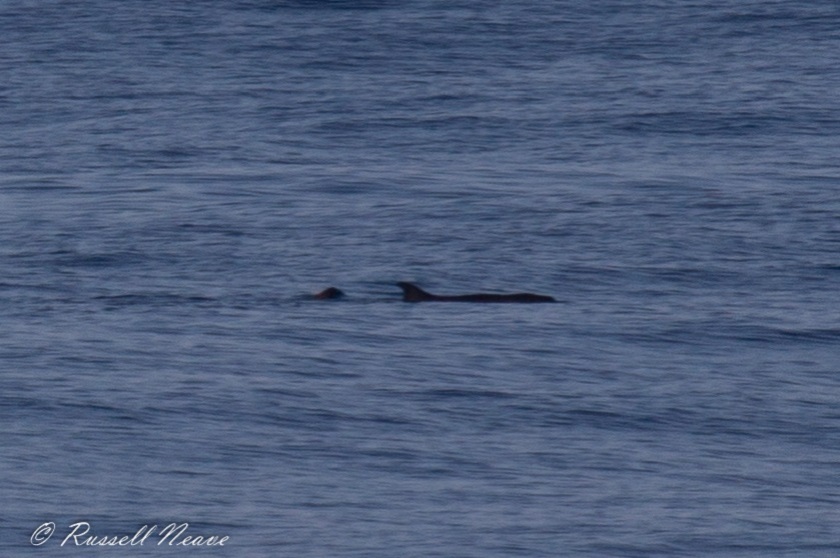
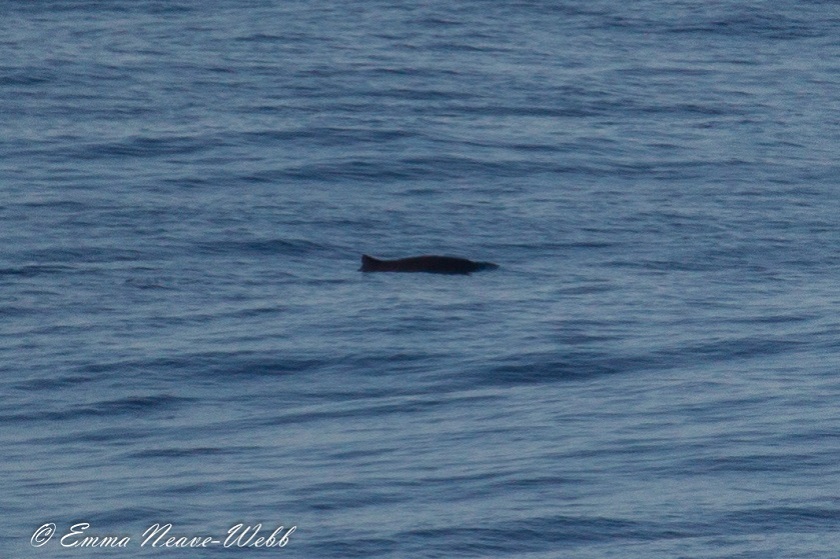
No rest for those of us on deck however, as almost immediately a very sleepy pod of Risso’s Dolphin slipped down the starboard side barely showing as they snuck by. A shout from the top deck from one of our eagle-eye and very enthusiastic passengers (thank you Richard!) had us scanning the seas until he shouted again for us to look up just as an immature Red-footed Booby drifted low over our heads! This rare and magnificent seabird delighted us all for at least 15 minutes with close flybys until it drifted off to starboard, attempted a dive and then continued back out to sea. The smallest of the Booby family, this species is infrequently seen in the eastern Atlantic with 4 individuals recorded in 2018 (including this bird).
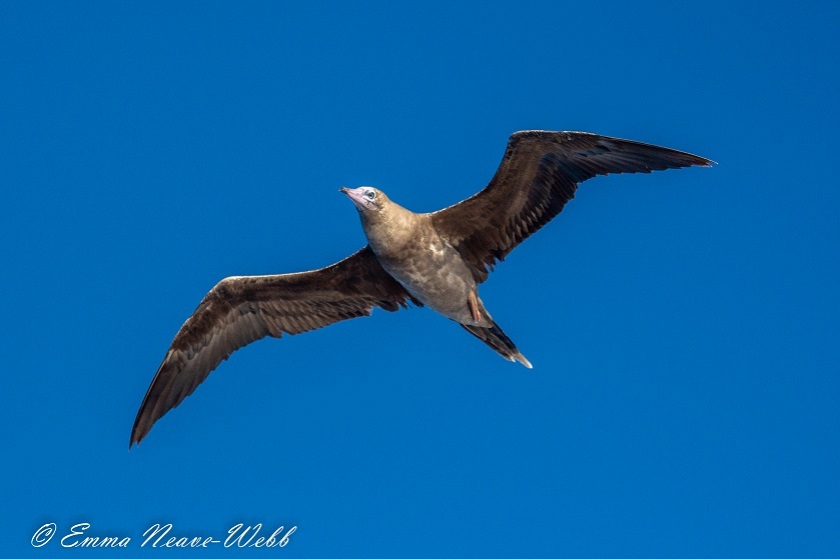
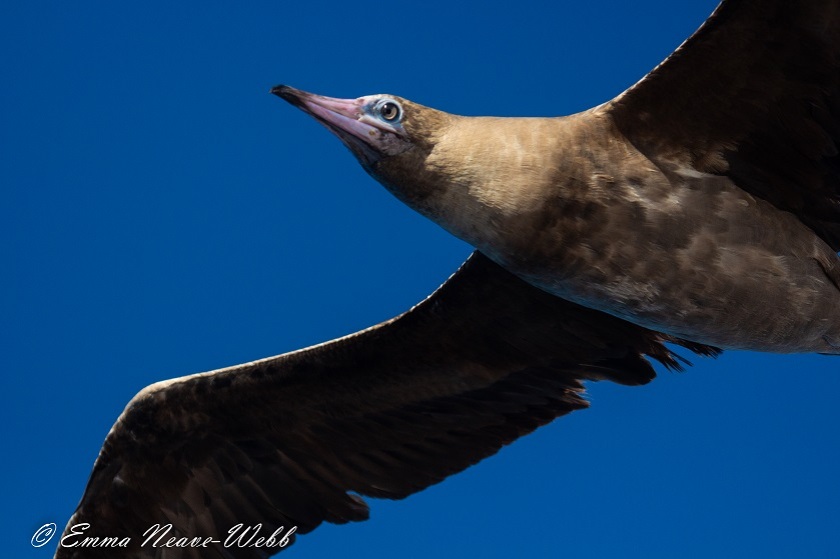
A large group of around 150 dolphins mid-morning kept us on our toes as they kept their distance and were silhouetted by the sun making identification difficult. Photo-identification in the evening showed them to be the only group of Pan-tropical Spotted Dolphin seen throughout the day. However, a ripple of excitement around the deck indicated that our next sighting wasn’t going to be quite so frustrating. A tall, diffuse blow, followed by a long, straight back and large, erect dorsal fin surging through the water could be only one thing, Sei Whale! This group of four whales seemingly working together as they fed, were in view for at least 10 minutes as they passed close down the port side delighting passengers with their display.
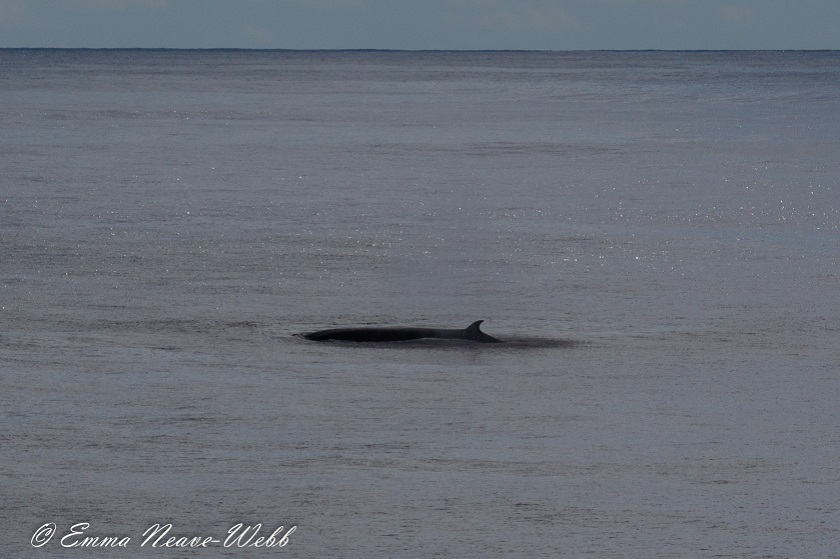
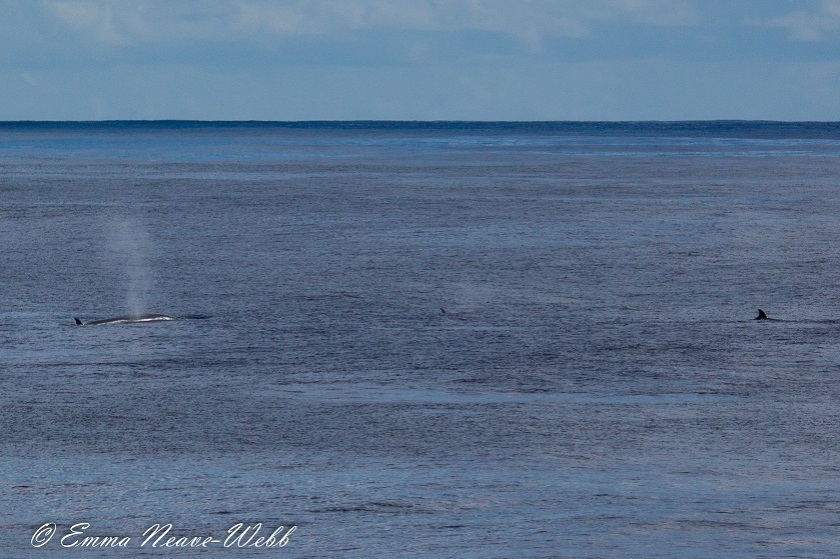
We picked up two groups of beaked whales which proved challenging to identify. After watching the second group of four animals for several minutes as we closed on them, we were finally able to identify them as Cuvier’s Beaked Whale, but the first animals remained elusive. Having missed breakfast due to not wanting to leave the deck, Russ and I decided to take a quick break hoping we wouldn’t miss anything….. we did! Passengers were delighted to tell us about the close pod of whales in front of the ship just minutes before we got back! A photograph showed them to be small, ‘mesoplodont’-type beaked whales (likely Sowerby’s, True’s or Gervais Beaked Whale), but sadly didn’t show the needed beak/head shot to clinch the identity…. the ones that got away!
Things quietened down slightly in the afternoon, but we still recorded another single Cuvier’s Beaked Whale as well as 4 distant, but active groups of Striped Dolphin. However, they left their best display to the end as we had a superbly active group of around 40 Striped Dolphin race into the bow in the early evening. Striped Dolphin won’t always bow-ride, but when they do it is something you don’t want to miss, what a sight!
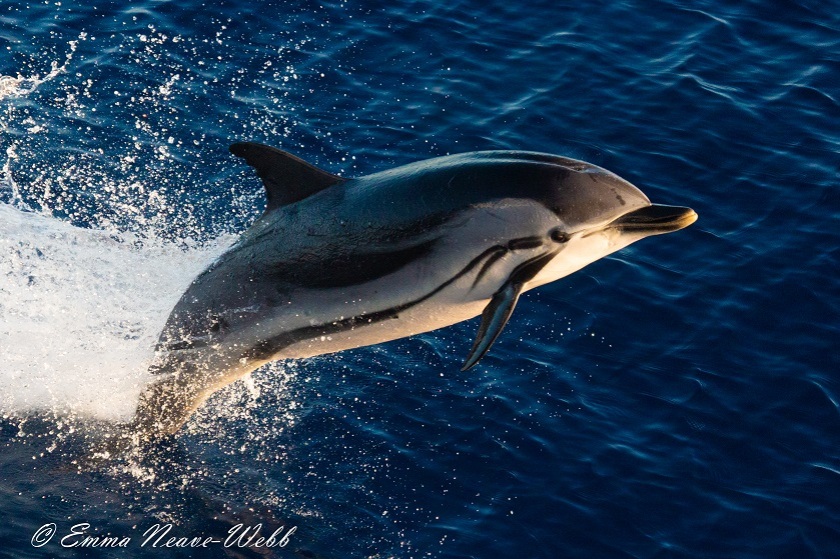
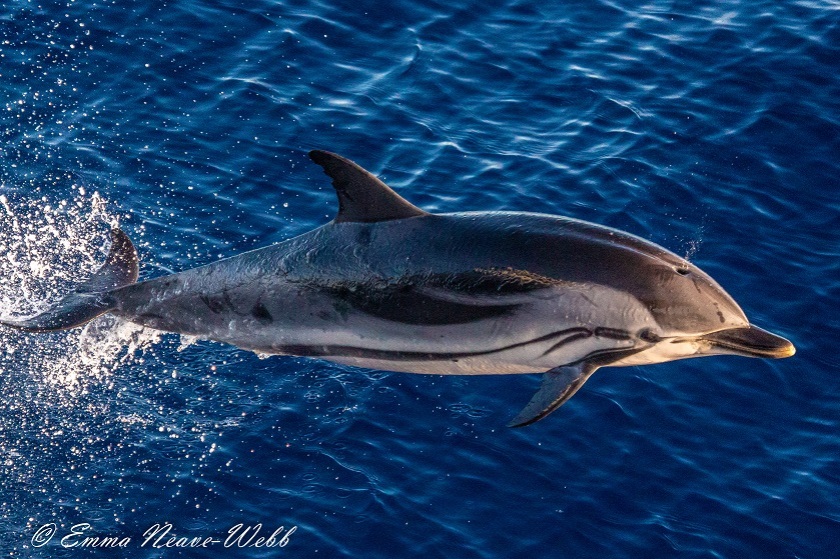
Throughout the day, we had a steady stream of Loggerhead Turtle swimming past the ship – as it was so calm, many were distant, but several passengers happily spotted their own turtles along with Flying Fish and had great fun trying to get each other on to them. Bird-wise, we were kept busy with many Cory’s and Great Shearwater, Madeiran and Leach’s Storm Petrel and reasonable views of a Fea’s/Zino’s Petrel.
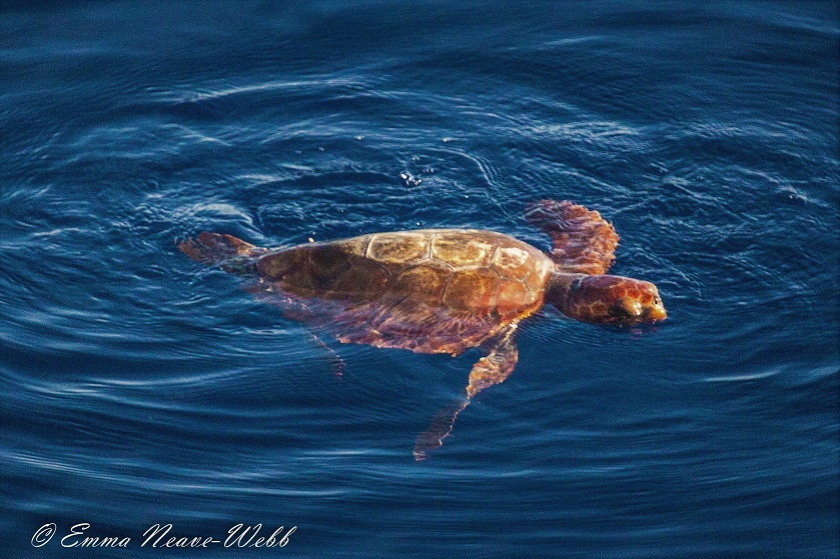
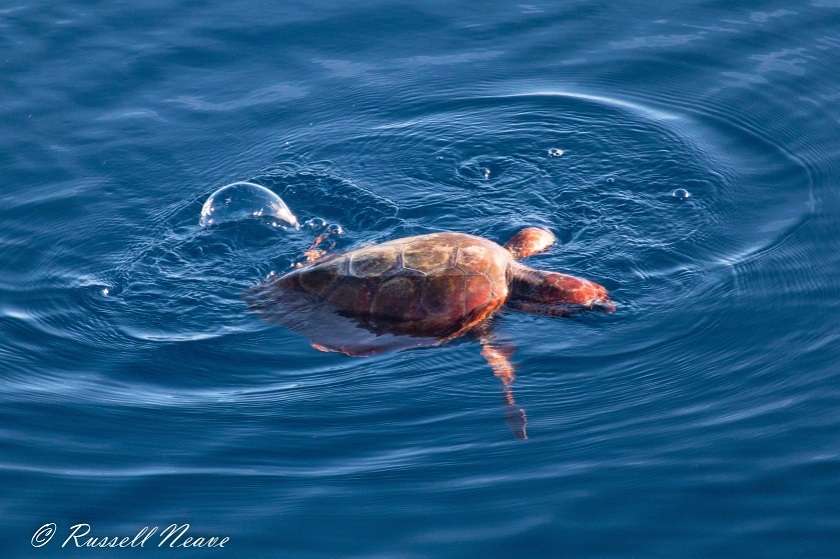
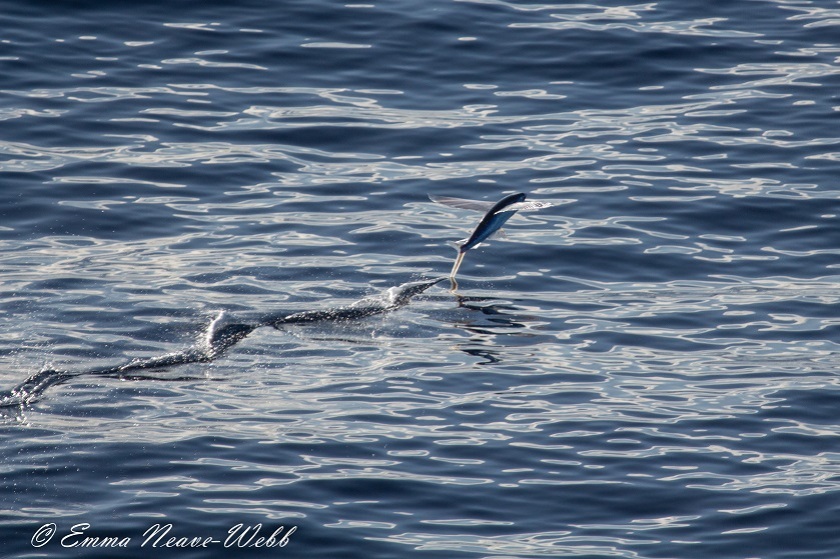
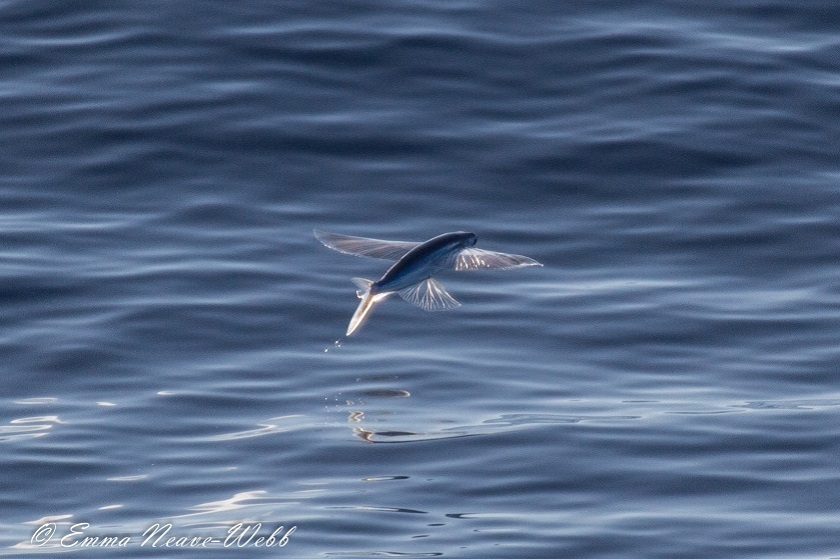
What a day! It really was one of those days that whale watchers can only dream of and certainly one of the best days at sea I’ve had in 15 years!
Thanks for reading!
Emma

